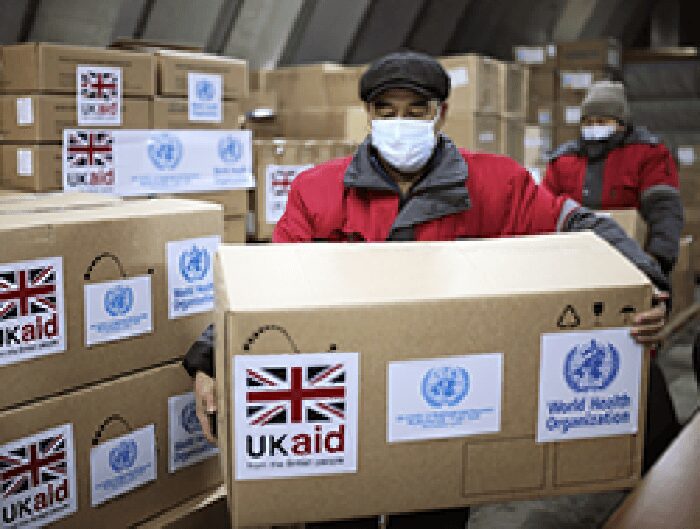Keynote Speech by Chief Economist Gita Gopinath
At the Inaugural Dr. Hansa Mehta Lecture
It is a tremendous honor to deliver the inaugural lecture in memory of Dr. Hansa Mehta – an Indian freedom fighter, an educator, a policy maker, and above all, a champion of women’s rights. We have Dr. Mehta to thank for ensuring that the Indian constitution enshrines gender equality. We have Dr. Mehta to thank for correcting and replacing the phrase “All men are born free and equal” in the United Nation’s Universal Declaration of Human Rights with “All human beings are born free and equal.”
It therefore befits Dr. Mehta’s legacy that we are gathered virtually today at the United Nations on International Women’s Day. And as an Indian woman, I am especially grateful for the opportunity to honor Hansabehn, on whose strong shoulders I and many others stand.
We have Dr. Mehta to thank for ensuring that the Indian constitution enshrines gender equality. We have Dr. Mehta to thank for correcting and replacing the phrase “All men are born free and equal” in the United Nation’s Universal Declaration of Human Rights with “All human beings are born free and equal.”
It therefore befits Dr. Mehta’s legacy that we are gathered virtually today at the United Nations on International Women’s Day. And as an Indian woman, I am especially grateful for the opportunity to honor Hansabehn, on whose strong shoulders I and many others stand.
We are meeting amidst a global health and economic crisis which threatens to roll back years of hard-won economic and social gains for women. Women have been affected disproportionately by the pandemic because they work predominantly in sectors such as restaurants and hospitality that have been hit hardest by the lockdowns, and as the main caregivers at home they have had to drop out of the labor market as schools closed. In developing countries, women are over-represented in the informal sector where they face lower pay, less job security and lower social protection. In these countries, girls have dropped out more from school to help in households. And further, recent reports from the United Nations highlight a disturbing fact that violence against women and girls has intensified since the outbreak of the pandemic.
These disparities worsen already-large gender gaps that persisted before the crisis. While there have been successes over the past few decades as women pushed the boundaries on educational attainment, economic and political participation, and broke through the glass ceiling to lead countries, corporations, and international organizations, there is much more than needs to be done to achieve gender equality.
Globally, only 55 percent of women are engaged in the labor market as opposed to 78 percent of men. In 72 countries, women are barred from opening bank accounts or obtaining credit. Women continue to earn about 50 percent less than men for the same type of work, and they represent only 25 percent of parliamentarians.
The moral case for gender equity is very clear. Today I will emphasize that we at the IMF have strived to make the point that the economic case for gender equity is also very clear.
As you are aware the IMF has been promoting policies to support growth and stability for more than 70 years. We assess the economic health of our member countries, provide policy advice and essential financing as the global lender of last resort. In just this pandemic we have provided financial assistance to 85 countries, in addition to debt relief for our poorest members.
With all this on our plate, why do we as an institution also care so deeply about women’s empowerment and inclusive growth? We care about it not only because it is a moral imperative, but because gender empowerment is critical for the economic wellbeing of both men and women, and for societies as a whole. Empowering women, through improving access to health, education, earning opportunities, rights and political participation, can be an economic game changer for any country. A wealth of research at the IMF, at the United Nations, other international organizations and academic institutions supports this assertion.
As countries around the world struggle to grow their economies—grappling with ageing populations, and buffeted by trade shocks, social unrest, weather-related disasters and now, the worst peacetime crisis in a century–tapping into the huge potential of women is unambiguously a win-win for both women’s empowerment and inclusive global economic growth.
I will elaborate next on how gender equity can lead to inclusive and stronger global economic growth, and the role governments, the private sector and international organizations should play in empowering women.
Third, women’s empowerment enhances economic resilience. Recent IMF staff research has made a strong case that more women leaders in finance would not only reduce existing gender employment gaps in the corporate sector, but also strengthen bank stability. This work finds that higher share of women on banks’ board of directors and banking supervision boards are associated with greater financial sector resilience, lower probability of insolvency, and greater profitability.
As women globally account for less than 20 percent of board seats in banks and banking supervision agencies, and account for fewer than 2 percent of bank CEOs, this suggests tremendous room to achieve greater financial sector resilience while also increasing banking sector profitability.
There is rigorous evidence that when women are in leadership positions it enhances the lives of other women. For example, in 1993, India started reserving a fraction of village council leadership positions for women. As a consequence, in villages with a female leader there was a significant rise in parents’ aspirations for their daughters, the gender gap in adolescent educational attainment was erased, and girls spent less time on household chores. This policy also weakened stereotypes about gender roles in the public and domestic spheres.
To summarize, the empowerment of women is an important channel by which we can obtain stronger, more inclusive, and more resilient growth. This takes me to the next question: what needs to be done? To be clear, responsibility for this must be shared by governments, the private sector, and international organizations.
A natural place to start is with governments which can use fiscal policy to assist with the advancement of women in education, health, financial inclusion and economic empowerment. Gender budgeting can ensure that tax and spending policies transparently and adequately include provisions for women’s access to opportunity in education and the workplace. IMF research has found that higher spending on childcare has contributed positively to female employment in the Czech Republic, Poland and Norway. Flexible working arrangements, such as those established in Japan, have also been shown to reduce gender gaps in labor force participation.
Well-designed workplace regulations that protect women under the law—including parental leave policies that encourage greater parity between men and women, flexible work arrangements, access to affordable childcare and health services, as well as the equitable treatment of women in courts and protection against violence—have all been shown to significantly raise women’s participation in economic activity. Governments can also reform tax policies that penalize secondary earners—who is most often a woman—to encourage women to join the labor force. Studies have found that reforming secondary earner taxation and boosting tax incentives for part-time work has helped support female employment and raise labor force participation in countries from Korea to Norway to the United Kingdom.
Governments must also take concrete actions to level the playing field for women. In many regions of the world, a key obstacle to women’s empowerment are outdated legal, regulatory and institutional impediments—all of which are in the hands of governments to reform. In more than 100 countries, women encounter at least one legal impediment to their participating in the economy. In some countries, women do not have the legal right to open bank accounts, sign contracts, own property, or initiate legal proceedings without a husband’s consent. 75 percent of countries in Francophone Africa have regulations restricting women’s employment and 12 countries in the Spanish-speaking countries have decrees prohibiting female employment in some sectors. In half of the countries we studied, when legal impediments to women undertaking economic activities were reduced, their labor force participation rose by at least 5 percentage points in the following 5 years.
We know that it takes only a few strong but persistent voices to change these inequities – it happened in India, with Dr. Hansa Mehta, who helped pushed through the Sarda Act that forbade child marriage, championed better educational opportunities for girls, and put in place personal law reforms.
There is a role for the private sector as well. To start with, businesses can promote gender equity by ensuring equal pay for equal work. Even where governmental regulations do not mandate it, firms can take the initiative to put in place work-life policies that support women’s labor force attachment including through mentoring and leadership opportunities, flexible schedules, travel and childcare subsidies, and zero tolerance towards workplace harassment.
It is estimated that in developing countries, 70 percent of women-owned businesses are under-served by financial institutions, as a result of which women entrepreneurs run smaller enterprises, earn less than male peers and are more likely to fail. This is a financing gap—as well as a lost business opportunity—in which the financial industry can step up to aid women’s financial inclusion.
And finally, we at the international organizations also have a role in this endeavor. The United Nations has declared gender equality among the 17 Sustainable Development Goals (“SDGs”) to achieve inclusive growth by 2030. At the IMF, we have increased our emphasis on women’s empowerment through training, technical advice, and peer-learning workshops with country authorities. I am also proud to note that we at the IMF have worked hard to diversify our leadership, successfully raising female directorship to over 30 percent, appointing the IMF’s second consecutive female Managing Director, and its first female Chief Economist. Gender equality is an aspect of the job I take very seriously and during my tenure I have increased the number of women in leadership positions in my own Department.
Let me now conclude by saying that this crisis has demonstrated the excellent contributions of women as leaders, as health professionals, as first-responders, as care givers. Yet women have been hit disproportionately hard by this crisis, and we still have a distance to go to get to gender equality. While much remains to be done, I am confident we will continue to make important progress towards the empowerment of women everywhere in the world.
Some 100 years ago this was the dream of a woman from a small town in India who we are honoring today. I hope this generation’s leaders and policymakers will take every opportunity they get to honor Dr. Hansa Mehta’s legacy through urgent and determined action for greater gender equality.
Thank you.













